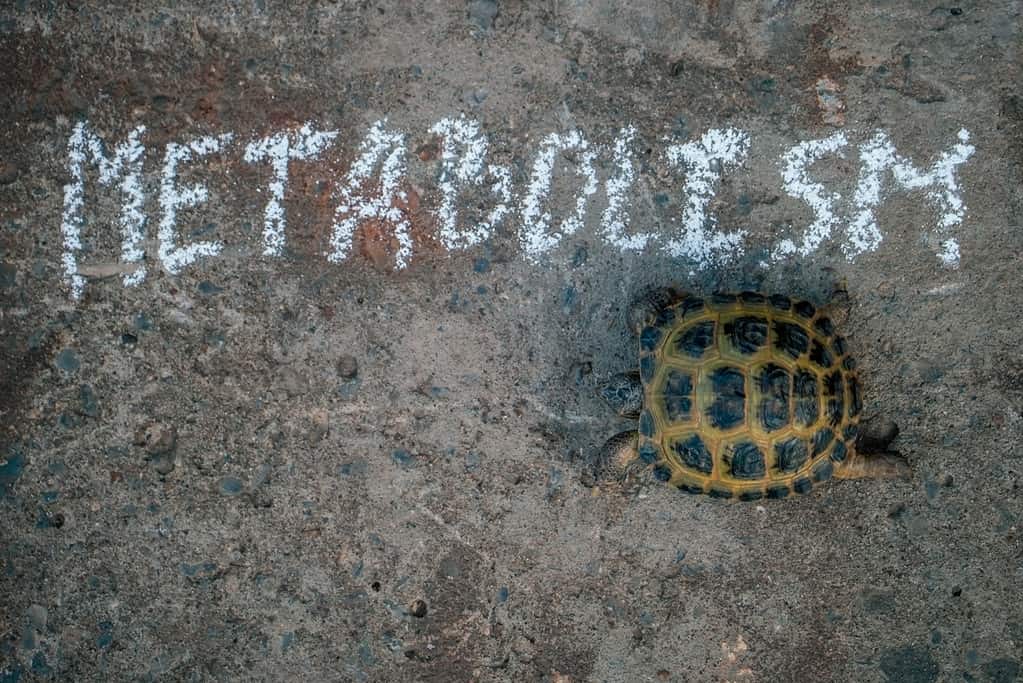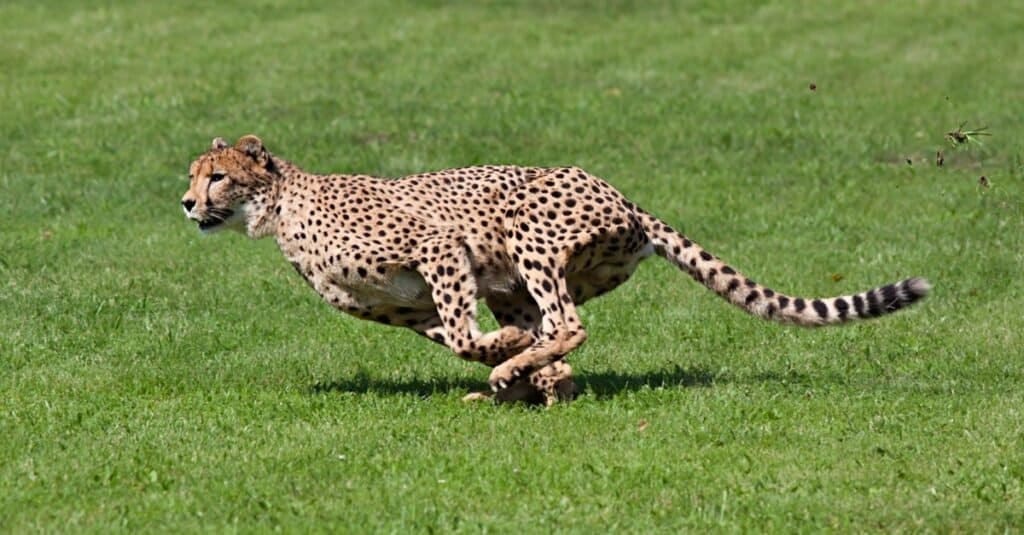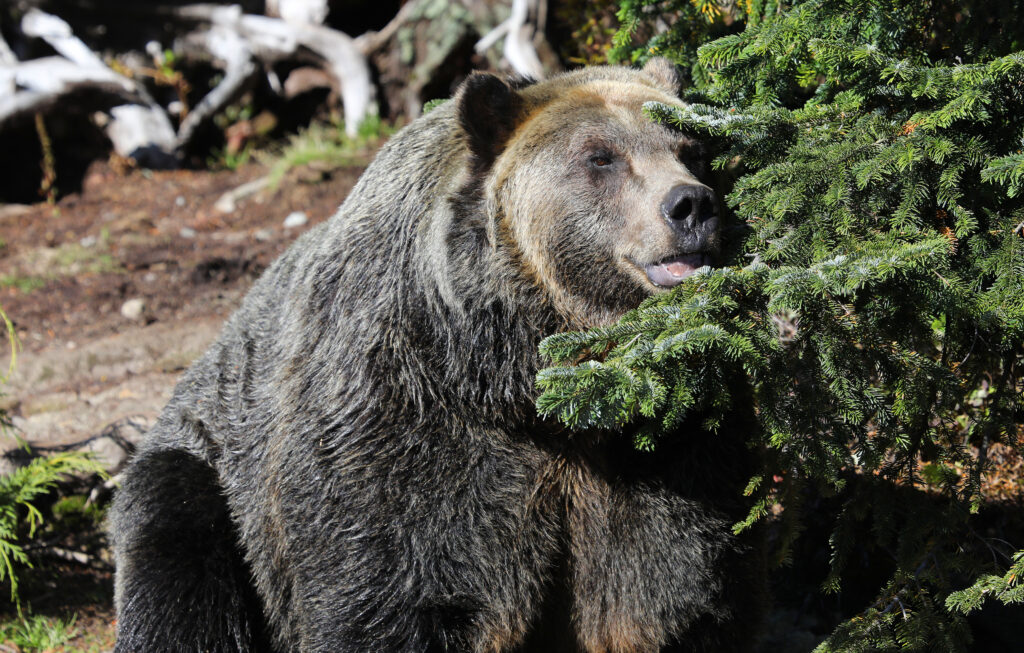Metabolism is the chemical reaction in the body’s cells that transform food and drinks into energy that fuels body functions. Every living thing has a metabolism, including humans, animals, and plants.
Summary

Metabolism affects many bodily functions.
©Panchenko Vladimir/Shutterstock.com
Living things need energy to do anything from moving to growing, thinking, and breathing. Animals use food as a source of energy. Proteins in the body control the chemical reactions of metabolism to release energy by breaking down food. When food breaks down into fuel, the body extracts the energy from the food molecules and uses it to power cellular reactions.
Metabolism is a complex process that runs constantly, even when an animal is at rest. It provides energy for body functions such as:
- breathing
- digesting food
- growth and repair of cells
- controlling hormone levels
- managing body temperature
Pronunciation of Metabolism
Metabolism is pronounced [muh-ta-buh-li-zm]
What is Metabolic Rate?

By burning calories, animals produce energy. The rate at which that process happens is the metabolic rate.
©Panchenko Vladimir/Shutterstock.com
Animals burn calories to produce energy. The rate at which they do this is called the metabolic rate. Many things can affect the metabolic rate, including the animal’s size, activity levels, age, diet, climate, and environment.
What Controls Metabolism?
Hormones in the endocrine system help control the metabolic rate. These include thyroxine (released by the thyroid) and insulin (released by the pancreas.)
Metabolism in Warm-Blooded vs. Cold-Blooded Animals

Resting metabolic rates are lower in cold-blooded animals than they are in warm-blooded animals.
©GreenCam1/Shutterstock.com
Resting metabolic rates are higher in warm-blooded versus cold-blooded animals. This is because warm-blooded animals must burn fuel to maintain their internal body temperature.
Warm-blooded animals, also called endotherms, include mammals and birds. In endotherms, extra energy from the metabolic process is converted into heat. That heat is used by the animal to maintain a constant body temperature.
However, cold-blooded animals, called ectotherms, don’t use metabolic heat production to maintain their body temperature. Their body temperature will change based on the temperature of the environment. Ecotherms include reptiles such as lizards, turtles, and snakes.
Therefore, endotherms of the same size require more fuel (food) to power the metabolic process of maintaining body temperature than ectotherms.
Metabolism and Body Size
Body size is a key factor in determining metabolic rate. For example, a hippopotamus has a lower metabolic rate than a guinea pig. The smaller the animal, the higher the metabolic rate will be.
Metabolism and Activity

A large cat chasing its dinner down will have a higher metabolic rate than one that’s napping.
©Maros Bauer/Shutterstock.com
An animal that is active will expend more energy than an animal at rest. For instance, a lion hunting its dinner will have a higher metabolic rate than a lion resting in the shade. The animal’s metabolic rate determines how much fuel (food) it needs to keep its body at a constant weight. If it doesn’t get enough food, it will lose weight. If it gets too much food without burning the extra energy, the animal will gain weight.
Metabolism and Hibernation

When animals hibernate or enter a state of torpor, their metabolism decreases, allowing them to expend less energy over time than they normally do, and thus, require less food.
©Jacqui Martin/Shutterstock.com
Some animals reduce their body temperature and slow their metabolic processes to such a low rate they go into hibernation. This is also called torpor, and it’s a state of decreased activity that helps animals conserve energy to survive unfavorable conditions, such as a bear that hibernates during winter.
During hibernation, an animal’s metabolism is so low, it expends very little energy and therefore requires very little fuel to survive. Environmental cues, such as less daylight and lower temperatures cue animals to get ready for hibernation.
Some animals enter into torpor, not during cold months, but during the summer in times of drought. When it happens during summer, it’s called estivation. Like hibernation, estivation helps animals survive during harsh conditions. Animals lower their metabolism during estivation and require less water to survive.
Animals that estivate include:
- reptiles
- amphibians
- mollusks
- insects
- fish
- some mammals.
An example of one of the few mammals that estivate is Africa’s four-toed hedgehog. A lack of food during hot summer days will send this animal into torpor for a few weeks at a time.
Metabolism in Plants

While size doesn’t determine the metabolic rate of plants, nitrogen content does.
©Rulli Yulianto/Shutterstock.com
As we said previously, every living thing metabolizes nutrients into energy, and this includes plants. Plants rely on water, sunlight, air, and soil to survive. Plant metabolism involves the chemical processes of photosynthesis and respiration.
Just like animals, plants require energy to power their cellular processes. But unlike animals, recent research has shown that plant size doesn’t make much difference in metabolism rates in plants. Rather, it’s dependent on the amount of nitrogen a plant contains.
What Animal Has the Fastest Metabolism?

Hummingbirds have the fastest metabolic rate of all animals.
©Martin Pelanek/Shutterstock.com
An animal with fast metabolism burns a lot of calories, even when at rest. But which animal has the fastest metabolic rate? The answer is the hummingbird.
The metabolic rate of a hummingbird is roughly 100 times that of an elephant. These tiny and fascinating creatures require a ton of energy to maintain their body weight. They also have the highest body temperature of any warm-blooded animal. In fact, hummingbirds eat half their weight in sugar each day to maintain their weight.
What Animal Has the Slowest Metabolism?

Few may be surprised by the fact that sloths have the slowest metabolic rate of all animals.
©Nacho Such/Shutterstock.com
Animals with slow metabolism need fewer calories for energy to keep going. With its reputation for slowness, you may not be surprised to learn the sloth has been recorded by scientists for having the slowest metabolism on earth among animals that are not in hibernation.
Sloths have low body temperatures and tend to move very slowly. They eat a diet of leaves, fruit, and other plants. This vegetation takes the sloth a long time to digest and doesn’t provide much fuel for energy. Sloths have evolved to conserve energy as much as possible by staying protected in their tree canopies and venturing out very seldomly.













